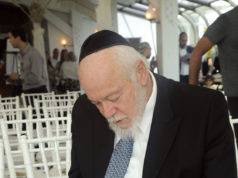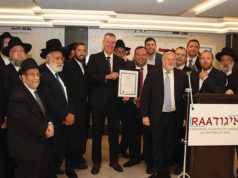
Christian IV was the first Danish king to establish connections with Jews. This happened because he needed a mintmaster to run the mint in the newly planned town of Glückstadt. In 1619, Albert Dionis was appointed to this post. Dionis, a Sephardic Jew, of Portuguese descent, had settled in Hamburg (in 1605) where he developed an extensive import-export business.
In 1622, King Christian IV invited Sephardic Jews from Amsterdam and Hamburg to settle in Glückstadt in the hope that this town would compete with Hamburg. To attract enterprising merchants with disposable capital, a large number of trading privileges, as well as freedom of religion, were offered. The privileges given to these Jews were broadened on several occasions until they obtained, among others, the right to trade freely in Denmark, and throughout the 17th century they provided luxury goods to the Danish court and arranged large loans for Danish kings.
Some Ashkenazi Jews traded in Denmark but they had to be able to produce a special letter of safe conduct, since privileges concerning the right to trade and live in Denmark only applied to the Sephardic Jews. In 1667, however, the Jews from Altona near Hamburg were empowered to travel and trade freely in Denmark which included Norway.
The real settlement of Jews in Denmark proper, however, first began in the 1670s when some tobacco manufacturers and dealers were allowed to settle in Copenhagen and in a few provincial towns but were not given any religious concessions.
Among the Jews in Copenhagen were some well-to-do Ashkenazi Jews. One of them, Meyer Goldschmidt, applied for, and was granted in 1684, the right to hold religious services for the community. This was, however, limited to the privacy of his own home, and no form of sermon could be preached. The establishment of the Copenhagen community is always considered to have begun with this event.
For the next 50 years, services took place in Goldschmidt’s home. A piece of land for a cemetery was purchased in 1694 and in the following year the Sephardim were also given permission to hold services. In general, however, the commercial possibilities for Sephardic Jews were few and far between in Copenhagen and the Ashkenazi Jews were dominant.
For over 50 years, Meyer Goldschmidt was the undisputed leader of the Copenhagen community. However, the leadership in fact was composed of seven men (three elders and four principals).
In 1719, a house in Fredericia was converted into a synagogue. In contrast, it took the Copenhagen community many long negotiations before they were given permission to build their first impressive synagogue. Not until 1766 were they able to consecrate the new building. The synagogue remained the focal point of the Ashkenazi community for 30 years until the house was destroyed in the great Copenhagen fire of 1795.
The few remaining Sephardic families stayed loyal to their own small prayer rooms, clinging to their old privileges, until the introduction of equal civil rights in 1814.
The Danish authorities encouraged Jewish immigration, provided the newcomers were rich Jews who could stimulate commerce and industry. It was different with poor German and Polish Jews, who tried to enter Denmark as peddlers or simply as beggars. They were quickly expelled.
After 1726, conditions for citizenship in Copenhagen were the possession of a certain sum of money, the ability to have a house built, or the establishment of some sort of workshop or factory. Very few Jews were in such affluent circumstances. In later years, a great many Jews came in on these terms, especially from Altona and Hamburg. Others went to provincial towns like Fredericia.
The total Jewish population of Copenhagen rose steadily from 19 in 1682 to approximately 1,200 by 1784.
Ashkenazi Jews in Denmark were mainly involved in moneylending, the mortgage market, and dealing in secondhand clothes, tea, coffee and chocolate. Consequently, these areas became known as “Jew trade.” In fact the term “Jew” was used as a designation of specific types of business and was only officially abolished after Jews obtained their civil rights in 1814.
The government usually supported the Jews when they wanted to expand their trade or establish new enterprises.
Throughout the century, Jews were given many privileges in the form of cash grants and loans to build new factories and, in addition, they were given monopolies as well as tax and customs duty relief. Some of these factories became, in the course of time, quite successful, particularly in the manufacturing industry where Jews dominated some areas of production.
Some Jews, however, used applications to manufacture as a pretext for getting into Denmark. The authorities were aware of this; nevertheless, such applications were usually accepted, for, as the College of Commerce wrote in 1757, “We acknowledge that these are unfortunate, ill-fated people; they are hated everywhere and civil rights are denied to them in most of Europe.” The majority of Jews earned poor livings as retailers.
The Danish merchant fleet and colonial trade experienced massive expansions during the second half of the 18th century, and many Jews were able to build up major businesses, and a number of important Jewish trading houses were founded during this period.
The official Danish attitude towards Jews had always been that they were beneficial to the economy, with the result that the government generally looked upon them with favor. This positive attitude was somewhat modified, however, partly because of the state church’s limited goodwill and partly by the action of various guilds which feared Jewish competition.
During the 18th century, unsuccessful attempts were made by the clergy to convert the Jews. Generally speaking, only the poorest and most ignorant let themselves be persuaded into Christian baptism with promises of material rewards. The clergy attempted to introduce, in 1728, obligatory attendance by Jews at conversion sermons in one of Copenhagen’s churches, but the Jews protested violently. When the church burned down shortly thereafter, the matter was dropped.
The authorities introduced a number of improvements in the civil rights of Jews such as giving them access to craft guilds (1788), to high schools (1799), the right to buy land and erect synagogues and, in 1809, they became liable, like the rest of the population, for military service.
In 1805, a quality school for poor Jewish boys was opened and a school for girls was founded in 1810, and named the Carolineskolen (Caroline School) after its patroness, Princess Caroline, daughter of the King. Both schools were maintained by money raised from affluent Jews in the community. In 1814, the new Royal Decree was issued, which gave Jews the same rights as other citizens.
Just before the issuance of this decree there was an outbreak of anti-Semitism. In 1813, Denmark had gone bankrupt and people were looking for a scapegoat. A German anti-Semitic book, translated into Danish, provoked a flood of articles both for and against the Jews.
In 1819 there were mob attacks on Jews in Copenhagen and many provincial towns. The authorities quickly acted to put a stop to the violence.
In 1829 Abraham Alexander Wolff, who came from Germany, was appointed Chief Rabbi in Copenhagen and, for the next 60 years, he was able to reunite the divided Jewish society. His first task was to hasten the construction of a large synagogue that could unite the many small congregations which held separate services in various parts of the city.
Until Wolff’s appearance, internal divisions had kept the Jewish community from working together toward this end, but Wolff’s impressive personality soon endeared him to his followers. By 1833, the new synagogue in Krystalgade was ready and Wolff was able to make the service both more solemn and dignified. He also had influence outside Jewish circles where he was accorded great respect, thus contributing to an improvement of the community’s relations with Danish society.
The Decree of 1814 meant that Jews could play a larger role in public life. A great many social relationships developed between Christian and Jewish families and, when these resulted in marriage, the Jewish partner was usually baptized. The many mixed marriages between Christians and Jews during the 19th century posed a real threat to the continuance of the Jewish community. The number of Jews declined while the Christian population continued to increase. In 1901, there were fewer than 3,500 Jews compared to over 4,000 in 1834.
Immigration became particularly significant between 1904 and 1917, until the authorities introduced very stringent controls. By then, the Eastern European newcomers already formed the majority of the Jewish community which numbered some 6,000 people, but the gulf between the “old” and “new” families was very wide.
The old belonged overwhelmingly to the middle and upper classes while the new were poor artisans and traders. The old were almost totally assimilated Danes but of the Jewish faith. The new were visibly Jewish, strangers within the Danish society who spoke Yiddish.
Danish Jews were afraid that the newcomers would provoke anti-Semitism. A few men who were assimilated yet held traditional religious beliefs helped the newcomers. This included the teaching of Danish and the establishment of a small community center where the newcomers could keep alive their Yiddish culture.
In the course of a few years, they found a place for themselves both within the Jewish community and in Danish society at large, while their children attended the two Jewish schools formerly in danger of closing for lack of pupils. They founded many small societies for crafts, sports, singing and drama, and instilled new life into the community.
Over the next few decades, these East European Jews improved their social and economic position by working hard, thus easing their integration into both the Jewish community and Danish society.
In the 1930s, however, another stream of refugees arrived, this time from Germany. They entered despite the fact that Denmark, like other countries at the time, was inhospitable towards foreigners since it was undergoing a period of economic crises.
The restricted refugee policy was carried out even during the German occupation of Denmark. In October 1943 most of the refugees along with about 7,000 Danish Jews were sent to Sweden. About 475 Jews did not reach safety, and were deported to Theresienstadt, a concentration camp in Czechoslovakia. The Danish authorities succeeded in persuading the Germans to permit the supply of some food and medicine to the imprisoned Jews from Denmark and to refrain from deporting them to the extermination camps further east. Fifty-two Jews died of disease and deprivation but the rest were rescued by the Red Cross in April 1945.
After the war, Denmark was more sympathetic toward foreign Jews than before the war and received some Jews from Hungary in 1956 and, in 1968, from Czechoslovakia. The largest immigration was from 1969 to1972 when about 2,000 Jews found refuge in Denmark from persecutions in Poland.
The more than 300-year-old history of Jews in Denmark reflects a steady progression of tolerance and acceptance. From being a group invited to settle for commercial reasons under the official protection of the king and the authorities, Jews came to be accepted, in the course of time, by the rest of the nation. The Jews’ own desire and ability to master the Danish tongue and culture eased their integration into Danish society. By the 20th century, the Jewish population has become an integral part of the Danish people.
______________
by Hanne Trautner-Kromann, dr. phil., Professor at Lund University, Jewish Studies



